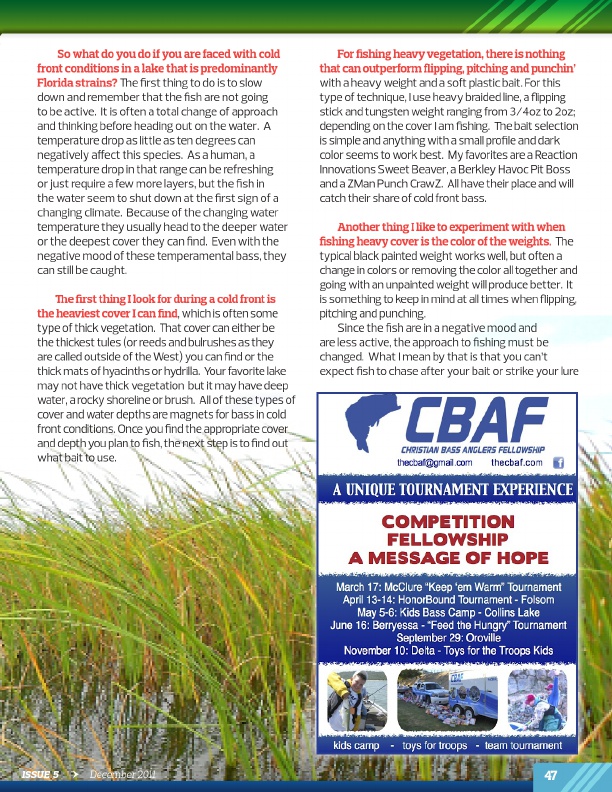
So what do you do if you are faced with cold front conditions in a lake that is predominantly Florida strains? The first thing to do is to slow down and remember that the fish are not going to be active. It is often a total change of approach and thinking before heading out on the water. A temperature drop as little as ten degrees can negatively affect this species. As a human, a temperature drop in that range can be refreshing or just require a few more layers, but the fish in the water seem to shut down at the first sign of a changing climate. Because of the changing water temperature they usually head to the deeper water or the deepest cover they can find. Even with the negative mood of these temperamental bass, they can still be caught.
The first thing I look for during a cold front is the heaviest cover I can find , which is often some type of thick vegetation. That cover can either be the thickest tules (or reeds and bulrushes as they are called outside of the West) you can find or the thick mats of hyacinths or hydrilla. Your favorite lake may not have thick vegetation but it may have deep water, a rocky shoreline or brush. All of these types of cover and water depths are magnets for bass in cold front conditions. Once you find the appropriate cover and depth you plan to fish, the next step is to find out what bait to use.
For fishing heavy vegetation, there is nothing that can outperform flipping, pitching and punchin’ with a heavy weight and a soft plastic bait. For this type of technique, I use heavy braided line, a flipping stick and tungsten weight ranging from 3/4oz to 2oz; depending on the cover I am fishing. The bait selection is simple and anything with a small profile and dark color seems to work best. My favorites are a Reaction Innovations Sweet Beaver, a Berkley Havoc Pit Boss and a ZMan Punch CrawZ. All have their place and will catch their share of cold front bass.
Another thing I like to experiment with when fishing heavy cover is the color of the weights. The typical black painted weight works well, but often a change in colors or removing the color all together and going with an unpainted weight will produce better. It is something to keep in mind at all times when flipping, pitching and punching.
Since the fish are in a negative mood and are less active, the approach to fishing must be changed. What I mean by that is that you can’t expect fish to chase after your bait or strike your lure
ISSUE 5 December 2011
47
http://www.thecbaf.com mailto:thecbaf@gmail.com